While historically high new and used car prices have forced buyers to look for "older" vehicles that may have aged well as a way of saving money, the issues of reliability and dependability have become even more crucial.
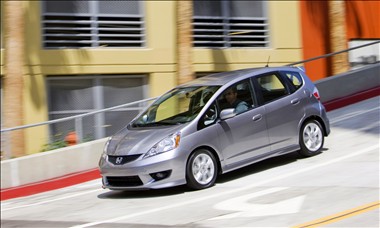
And the Honda Fit, with its solid reputation for reliability, may just "fit" the bill in the compact car category. Yes, even the first-generation Honda Fit is generally considered quite reliable. It's known for its fuel efficiency, practicality, and overall dependability.
History has proven that with proper maintenance and care, an older Honda Fit can last for many years and cover substantial mileage. Some owners have reported their well-maintained models lasting well over 200,000 miles, and reports of reaching over 300,000 are not uncommon.
It should be noted that factors like driving habits, maintenance history, and environmental conditions play significant roles in determining a car's longevity, but Hondas, in general, are known for their durability and longevity when well-maintained.
Still, all cars likely have some reported mechanical issues, including some that may be more specific to a particular model, even those with strong reliability reputations. That's just a natural part of car ownership.
So here, ...
- We'll do an overview of earlier Honda Fit generations, specifically the first and second covering the 2007 - 2014 model years.
- Then we'll list possible mechanical issues that have been reported by some owners so they can be checked before buying one today.
- And then we'll summarize the overall pros and cons of an older Fit worth consideration for potential buyers today.
The Honda Fit
The introduction of the Honda Fit to the United States with the 2007 model had remarkably good timing. Gas prices were rising and a "Honda" (good quality) at a reasonable price with good gas mileage seemed to be just what the doctor ordered.
The roots for the Fit actually go back a bit further, however. Introduced in 2001 to both Japan and Europe as the Honda Jazz, the future Fit was an immediate success. And it just continued to get better.
The accolades for the Fit usually refer to its frugal engine, flexible interior configurations, responsive handling and a rather long list of standard features.
First Generation Honda Fit (2007 - 2008)
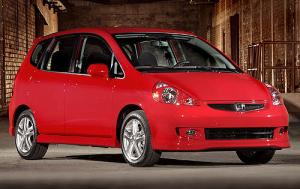
The first generation Fit offered Base and Sport versions, both with a 109 horsepower, 1.5-liter four-cylinder engine. The gas mileage for this Fit is 28 mpg city and 35 mpg highway for the manual, and 27 mpg city and 35 mpg highway for the automatic. The Sport model gets 27 mpg city and 34 on the highway.
Becoming Honda's new entry-level model, this subcompact four-door, five-passenger hatchback wagon had nearly the same passenger space, and more actual cargo space, than the Civic sedan at the time, despite the front-wheel-drive Fit being 19.3 inches shorter overall.
It's clever design work that helped create this extra space in a small package. A lower cargo floor was allowed by mounting the Fit's fuel tank near the center of the vehicle.
Plus, rear seat cushions flip vertically to create additional space behind the front seats. They also fold down along with the seatbacks to make a flat load floor.
Standard safety features include antilock brakes, front side airbags, and curtain side airbags. Other standard features on all of these Fits include air conditioning, power windows, power locks, and power mirrors, not something to be taken for granted then.
The Sport model also comes with 15-inch alloy wheels, wider tires, a roofline rear spoiler, an underbody kit, cruise control, remote entry, a leather-wrapped steering wheel, and a six-speaker 200-watt audio system with digital media connection.
2007 - 2008 Honda Fit Possible Mechanical Problems
The 1st generation Fit generally had fewer reported issues compared to some other models and earned a good reputation for reliability. But like any vehicle, there were some complaints or problems that some owners reported that should therefore be included in an inspection before buying one today:
VSA (Vehicle Stability Assist) Modulator-Control Unit: Some owners reported issues with the VSA modulator-control unit, causing the VSA warning light to come on. This could lead to a decrease in stability control.
Air Conditioning Compressor: Some users reported problems with the air conditioning compressor failing prematurely, resulting in the lack of cool air in the cabin.
Transmission: There were sporadic reports of transmission issues such as rough shifting or slipping.
Front Compliance Bushings: Premature wear on front compliance bushings causing noise or instability in the suspension.
Electrical Issues: Occasional reports of electrical issues, including problems with power locks, windows, or dashboard lights.
It's worth noting that not all Honda Fit models experienced these problems, and many owners never encountered any significant issues. Regular maintenance and timely repairs may have prevented or mitigated these issues.
Second Generation Honda Fit (2009 - 2014)
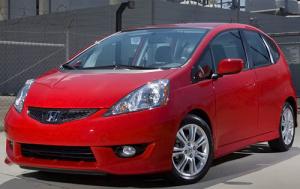
Redesigned for 2009, the second generation Fit was again available in base and Sport trim levels. This Fit is 4.2 inches longer and received a suspension update for better handling, as well as enhanced body rigidity for improved crash safety.
The extra length provides welcome extra room for rear passengers and the rear seats can now conveniently fold down without removing the headrests. Also new was a telescoping steering wheel, while some of these Fit models can now also be found with new optional features: navigation and stability control.
Powering both base and Sport models is a fuel-efficient 1.5-liter four-cylinder engine, but production has been boosted to 117 horsepower without a sacrifice in fuel economy. This engine also has Honda's variable valve timing technology, i-VTEC, for better around town driving performance.
This version comes with either the standard 5-speed manual transmission or the optional 5-speed automatic, with the vast majority being the automatic. In the Fit Sport model, paddle shifters come with the automatic transmission.
2009 - 2014 Honda Fit Possible Mechanical Problems
The second-generation Honda Fit maintained a good reputation for reliability, but like any vehicle, there were some reported issues or common problems that owners encountered which should therefore be checked for prior to purchase today:
Air Conditioning Compressor: Similar to the first generation, some owners reported premature failure of the air conditioning compressor, resulting in a lack of cool air in the cabin.
VSA (Vehicle Stability Assist) Modulator-Control Unit: Some users experienced issues with the VSA modulator-control unit, causing the VSA warning light to illuminate and affecting stability control.
Transmission: There were sporadic reports of transmission problems like rough shifting or slipping in some vehicles.
Front Compliance Bushings: Premature wear on front compliance bushings causing noise or instability in the suspension.
Electrical Issues: Occasionally, owners reported electrical problems such as issues with power locks, windows, or dashboard lights.
It's again important to note that these problems weren't universal, and many owners never faced any significant issues with their second-generation Honda Fit.
Overall Pros And Cons Of An Older Honda Fit
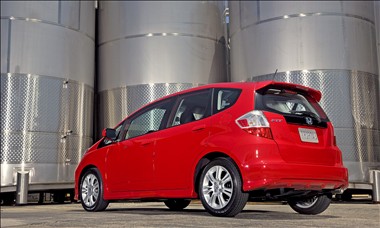
Older Honda Fit Pros
Reliability: Hondas, including the Fit, are known for their reliability. Even older models can often run well with proper maintenance.
Fuel Efficiency: The Fit has historically been praised for its fuel economy. An older model can still offer good mileage, which is beneficial in times of rising fuel prices.
Practicality: The Fit is a versatile and practical car with a surprisingly spacious interior and configurable cargo space, which is useful for daily commuting or hauling goods.
Lower Initial Cost: Older models typically have a lower upfront cost due to depreciation, allowing you to save money compared to purchasing a newer car.
Agile Handling: The Fit is known for its nimble and agile handling, making it fun to drive, especially in urban settings.
Maneuverability: Its small size and tight turning radius make it easy to navigate through tight spaces and park in crowded areas.
Visibility: Its large windows offer good visibility, aiding in maneuvering and enhancing the driving experience.
Older Honda Fit Cons
Maintenance Costs: Older cars may require more frequent maintenance or repairs, which can add up over time. This could potentially offset the initial savings.
Outdated Features: Older Fits might lack some of the modern features found in newer cars, such as advanced safety technology, infotainment systems, or convenience features.
Road Noise: Some users have noted that road noise can be more noticeable, especially at higher speeds, impacting the overall quietness of the cabin.
Ride Comfort: Due to its compact size, the Fit's ride can feel a bit firm or bumpy, especially on rough roads. And some might find the seats less comfortable for longer drives, especially in the older models.
Performance vs. Power: While fuel-efficient, some might find the Fit's engine performance a bit lacking, especially during acceleration or when carrying heavier loads.
Things To Do When Considering An "Older" Vehicle
Locate Lower Mileage Vehicles: They are certainly out there to be found with careful and patient shopping. Be willing to drive a distance if you have to.
Vehicle History and Maintenance: Ask for the vehicle history report (CarFax or AutoCheck) as well as documented maintenance and repair records. If not provided by the Dealer or private seller, it's usually best to move on.
Pre-Purchase Inspection: Have the vehicle independently inspected before making a final decision. This usually will cost in the $150-$200 range but is well worth it given the potentially thousands in savings over the long term.
And My #1 Price Tip: Please always get online price quotes at auto sites such as CarsDirect.com and Edmunds.com (both, actually), whether looking for a new or used car. Competition among dealers for your business does amazing things to prices, and it's so easy. It really does make a difference.
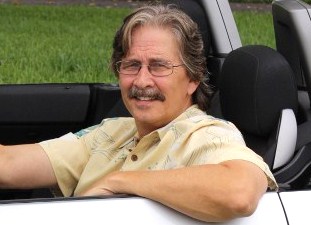 By Josh Rosenberg
By Josh Rosenberg